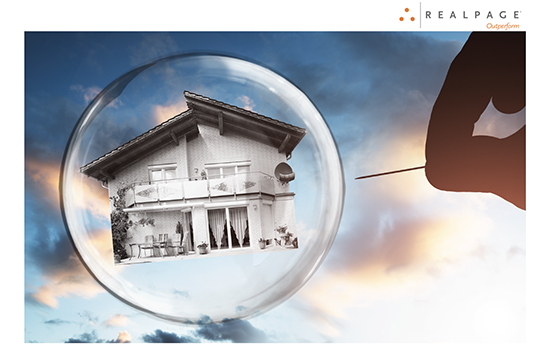Optimism and Anxiety Collide in Apartment Industry

Periods of extreme optimism and those mired in a rising-inflation environment are circumstances the multifamily housing industry has dealt with before.
But rare is today’s mood, according to RealPage’s Jay Parsons, “I’ve never seen so much exuberance about the ‘now’ and anxiety about the ‘future’ all at one time.”
Parsons is the property management software firm’s vice president, head of economics and housing. He sat with Daniel Mahoney, managing director, LaSalle Investment Management; and Grant Montgomery, VP of Research, WashREIT; during a panel at National Apartment Association’s Apartmentalize conference recently in San Diego.
The session, “Focus on the Road Ahead: The Economy and Multifamily Housing Sector,” addressed where investment and energy be targeted to yield maximum results as economists and their investors explore conditions and expectations in the U.S. economy.
Key to this decision-making are the changing demographics and resident preferences for owning versus renting thrown in with the new economy.
Inflation and Stagflation in the Conversation
Borrowing a line from Mark Twain, “History doesn’t repeat itself but it does often rhyme,” Mahoney said, citing today’s inflation read at the highest it’s been in 40 years.
“But we’ve been here before and we can look at what happened then. From 1974 to 1986 rents still grew 9 percent to 10 percent annually. The Fed came in and raised interest rates that put us into two unique recessions. Even during these recessions, rents were up.”
Interestingly, the country’s demographics then were dominated by the Baby Boomers, who were first becoming home owners. Now, renters are ages 25-34 and there are 6.6 million of them and they have different perspectives – more favorable to renting – than Boomers and their desire to own a home.
Stagflation, too, has entered the conversation – defined as a period when wages stall, but the cost of goods continues higher. “This is a scenario right now, and not reality,” Mahoney said.
Renewals at All-Time Highs
Parsons pointed out that not long ago – during the Great Recession in 2008-09, the apartment industry was still able to maintain a roughly 93 percent occupancy rate.
Parsons said owners and investors can see that renters’ incomes are rising along with inflation, but for how long?
He drew attention to rent growth and resident income growth within the Class C segment. Here, rent growth is the lowest when compared to As and Bs, and these lowest-income earners right now are seeing some of the highest wage growth.
“The steady wage growth we’re seeing is key to help keep affordability concerns at bay,” he said. “Affordability right now is a tailwind. Higher-income earning renters are doing well with the wage hikes, too, because most are well-paid to begin with and it’s an employees’ market and they are receiving raises in this competitive job market.”
Additionally, renter renewal rates are at approximately 57 percent – an all-time high. And these residents are renewing at about 10 percent more rent.
“Operators, however, know it’s always harder to get those bumps on the second and third turn than the first,” Parsons said. “But you hear property managers softly telling these renewing residents to ‘Go ahead, shop the competition.’ ”
Mahoney concurred, “Renters are seeing they can get a better deal by staying put.”
Added Montgomery, “Renters are able to make these logical decisions.”
Single-Family Market Pricier than Rentals
Mahoney, like many, have their eyes on the ongoing astounding single-family home market.
“Home-price growth rates nationally are even higher than in apartments – about 20 percent,” he said. “Mortgage rates and financing costs are up 60 percent year over year, so you can see how this will help the apartment industry continue to succeed for the time being.”
Montgomery said apartment rents are starting to see peaks, “but this is coming after a long high growth period, and that still, 20 percent of signed leases are new leases. Lease renewals are at high double-digit rent growth rates in many key markets.”
Buyers and Sellers Breaking the Bank
Meanwhile, apartment sales are not slowing. Last year’s transactions topped $350 million, which is more than double the next highest YoY period ever, the panel said.
“Some potential buyers and sellers are still waiting it out,” Parsons said. “But holding cash right now is almost like losing money.”
On the expense, Montgomery said his team is feeling the pressure from rising materials costs. “This is the area we are experiencing the most pressure,” he said.
Mahoney said that rising rents are helping to offset these expense spikes.
Adapted from GlobeSt.com reports.



